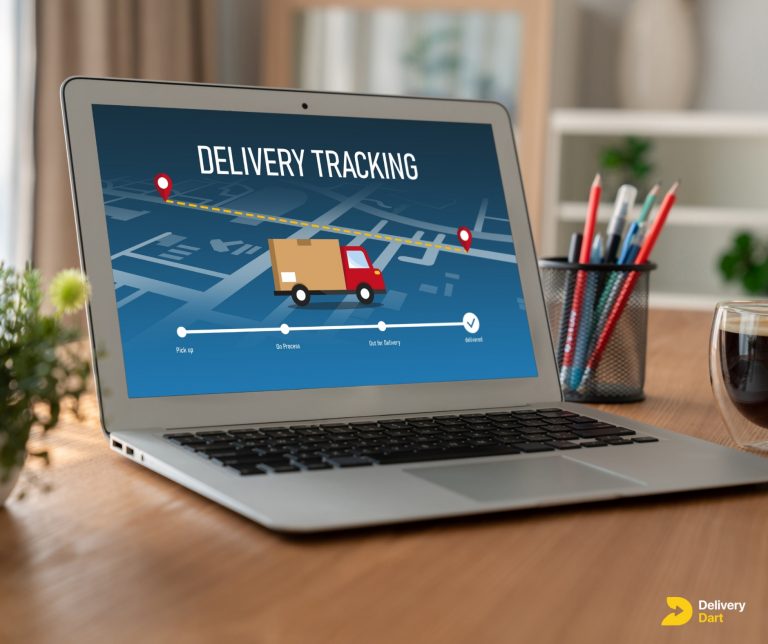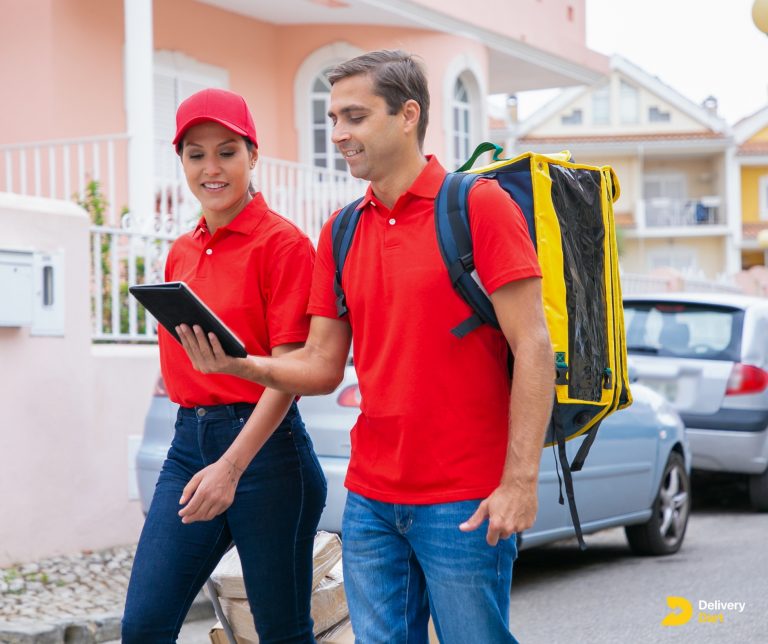Have you ever wondered how a giant like FedEx, a company that ships millions of packages daily, can still struggle to keep up with the very demand it created? In 2024, we’re seeing a fascinating phenomenon unfold—FedEx is at the top of its game, yet it’s facing growing pains that could change the future of global logistics. Imagine being a company that’s too big to fail, but constantly battling rising costs, fierce competition, and a world where customers expect faster, cheaper, and greener deliveries.
This is the FedEx Paradox—an industry leader caught between massive growth and operational challenges. And here’s the catch: despite all its success, FedEx must rethink how it does business to stay ahead of the curve. As e-commerce booms and consumer expectations skyrocket, how does FedEx keep winning without breaking under pressure?
This blog will break down what’s really going on behind the scenes at FedEx, and why this paradox could mean big changes in how your packages get delivered. We’ll also explore new players like DeliveryDart, a rising competitor that’s shaking up the industry with its tech-driven approach. If you’ve ever wondered what’s next for delivery services—and how you can benefit from the shifts—this is the blog for you. Let’s dive in.
Understanding the FedEx Paradox: Growth vs. Challenges
FedEx is undeniably a powerhouse in the logistics world, operating in over 220 countries and raking in a massive $93.5 billion in revenue in 2023 alone. But, like any giant, the bigger you grow, the harder it becomes to manage the weight of your own success. This is where the “FedEx Paradox” comes into play—how do you continue to thrive in a rapidly expanding market while grappling with increasing challenges?
Let’s break it down:
- Impressive Growth: Over the years, FedEx has been at the forefront of innovation in the logistics industry. Its global reach is unmatched, and it’s the go-to name for millions of businesses and individuals who rely on swift, reliable deliveries. The rise of e-commerce has been a major driver of this growth, especially with online shopping expected to account for over 22% of global retail sales by 2024.
- But Here’s the Catch: This massive expansion doesn’t come without its fair share of headaches. Rising fuel prices are eating into profits, labor shortages are making operations tougher, and there’s an ever-growing demand for faster, more environmentally friendly delivery options. Air transportation, one of FedEx’s biggest strengths, is also one of its biggest vulnerabilities—air traffic disruptions, high fuel consumption, and regulatory issues can quickly spiral into major challenges.
- Walking a Tightrope: FedEx is constantly balancing its explosive growth with the rising costs of maintaining such a vast operation. It’s not just about delivering packages anymore—it’s about doing so in a way that’s fast, cost-effective, and sustainable. This balancing act is at the heart of the FedEx Paradox.
So, while FedEx continues to grow, the pressure is on. Can they find a way to keep up with the demands of a booming market while keeping costs in check? Stay tuned as we dive deeper into the strategies FedEx is using to maintain its competitive edge.
Technological Innovations in 2024: Staying Ahead

FedEx is no stranger to innovation, and in 2024, the company is doubling down on technology to maintain its competitive edge. As the logistics world evolves, staying ahead of the curve means leveraging cutting-edge solutions like AI, automation, and robotics to streamline operations and improve efficiency.
AI and Automation: The Brainpower Behind Better Deliveries
FedEx has heavily invested in artificial intelligence (AI) and automation to optimize every step of the delivery process. AI-powered predictive analytics have become a game changer for FedEx. Imagine this: FedEx’s AI now analyzes millions of data points in real time to find the fastest, most fuel-efficient routes for drivers, reducing fuel costs by millions and speeding up delivery times by an impressive 20%. It’s like having a supercharged GPS that not only tells you where to go but also how to get there faster, using less gas!
Robots and Drones: The Future of Last-Mile Delivery
When we think of delivery, we picture trucks and drivers—but FedEx is bringing in reinforcements from the future! Autonomous robots and drones are slowly making their way into FedEx’s last-mile delivery solutions, especially in dense urban areas. In trials, these robotic helpers have cut delivery times by up to 30%. Imagine your package being delivered by a drone buzzing right to your doorstep—faster and without the need for a human courier! While not yet widespread, this innovation is setting the stage for the next big leap in delivery efficiency.
Smart Logistics Platforms: Predicting the Future (and Your Package’s Arrival)
FedEx’s Smart Post system has transformed how customers experience deliveries. Using AI, this system predicts delivery windows with astonishing accuracy. Have you ever wondered why your FedEx package now arrives right on time? It’s thanks to this smart platform, which has already boosted customer satisfaction by 15%. No more waiting around all day for a package—FedEx is working to make sure you know exactly when to expect that knock on the door.
In 2024, FedEx’s focus on technology isn’t just about keeping pace with competitors—it’s about redefining what’s possible in logistics. With AI, robots, and smart systems leading the charge, FedEx is positioning itself to meet the demands of the future while keeping customers happy. The race is on, and FedEx is leading the pack, but the journey is far from over.
Global Competitors and Market Share
FedEx may be a global logistics leader, but it certainly isn’t alone in the race. In 2024, competition is fiercer than ever, with major players like UPS, DHL, and even Amazon carving out significant portions of the market.
UPS and DHL: Heavyweights in the Logistics Arena
When it comes to global competition, UPS and DHL are FedEx’s biggest rivals. UPS reported an impressive revenue of $96.3 billion in 2023, putting it neck and neck with FedEx in North America. Then there’s DHL, which boasts a strong international presence, continuing to expand its global shipping capabilities. DHL is a particularly tough competitor in Europe and Asia, offering express deliveries and comprehensive supply chain solutions. The rivalry between these giants isn’t just about delivering packages—it’s about who can offer faster, more reliable, and cost-effective solutions across different regions of the world.
The Amazon Effect: A Logistics Game-Changer
Perhaps the most disruptive force in recent years has been Amazon. As Amazon builds out its own logistics network, it’s becoming a formidable player in the delivery space. Amazon now handles much of its own shipping, reducing its reliance on FedEx, UPS, and others. In fact, FedEx’s share of Amazon-related deliveries has dropped by 6% over the past two years. Amazon’s rapid expansion into logistics—complete with its own fleet of planes, vans, and drivers—means the competition isn’t just from traditional couriers anymore. This shift is forcing companies like FedEx to innovate quickly or risk losing market share to the e-commerce giant.
Market Share Breakdown: Where FedEx Stands
Despite the fierce competition, FedEx still holds a 39% share of the North American logistics market, a key region where its dominance is clear. However, on a global scale, its market share is more modest compared to international players like DHL, which has a much stronger footprint in Europe and developing markets. The challenge for FedEx is growing its international presence while maintaining its leadership in North America, especially as rivals like Amazon push further into the global logistics space.
In this ever-evolving market, FedEx must keep an eye on both traditional competitors like UPS and DHL, and new disruptors like Amazon, all while figuring out how to expand globally and sustain its leadership position. The battle for market share is far from over, and the next few years will be critical in determining who leads the logistics race.
Sustainability Efforts: A Green Future for FedEx
As the world shifts toward greener practices, FedEx is stepping up its sustainability game, aiming to drastically reduce its environmental impact. In 2024, sustainability isn’t just a buzzword for FedEx—it’s a core part of their strategy for the future.
Environmental Goals: Carbon Neutral by 2040
FedEx has set an ambitious target: to become carbon neutral by 2040. This isn’t just about slapping a “green” label on their operations—FedEx is actively investing in alternative fuels, renewable energy sources, and electric vehicles (EVs) to make this goal a reality. By focusing on cutting down emissions, FedEx is positioning itself not just as a leader in logistics, but also as a leader in environmental responsibility. The company is already making big strides with plans that are as bold as they are necessary for a more sustainable future.
Electric Vehicles: Driving Toward a Cleaner Future
One of the key ways FedEx is tackling carbon emissions is through its growing fleet of electric delivery vehicles. By the end of 2023, FedEx had already added 5,000 EVs to its fleet, with plans to double that number to 10,000 by the end of 2024. These electric vehicles play a crucial role in reducing FedEx’s reliance on traditional fuel-powered trucks, helping the company move closer to its carbon-neutral goal while saving on fuel costs.
Fuel Efficiency: Smarter Routes, Less Waste
It’s not just about switching to electric vehicles—FedEx is also focusing on making its existing fleet more fuel-efficient. Through innovations in route planning, FedEx has managed to reduce fuel consumption by 17%, cutting down emissions and operational costs in the process. Using data-driven technologies, FedEx optimizes routes in real-time, ensuring fewer miles are driven and less fuel is wasted. It’s all part of their larger mission to make logistics smarter, greener, and more efficient.
FedEx’s sustainability efforts are more than just a PR move. They reflect a deep commitment to transforming the future of logistics while contributing to the global push for greener business practices. As environmental concerns continue to grow, FedEx is proving that even the largest companies can lead by example, showing that sustainability and business success can go hand-in-hand.
The Road Ahead: Embracing Innovation, Sustainability, and Competition
As we look to the future, it’s clear that FedEx is standing at the crossroads of innovation and challenge. From cutting-edge technology to ambitious sustainability goals, the company is reshaping how global logistics are done. Yet, the path forward won’t be without hurdles—whether it’s fierce competition from heavyweights like UPS and DHL, or the disruptive force of Amazon’s expanding logistics network.
But this is also what makes the FedEx Paradox so intriguing. In 2024 and beyond, FedEx will continue to innovate, finding ways to balance its massive growth with operational efficiency and environmental responsibility. The rise of new players like DeliveryDart adds even more excitement to the mix, bringing fresh competition to the scene with tech-driven, consumer-focused solutions.
For businesses and consumers alike, the future of delivery looks faster, greener, and more reliable than ever before. It’s an exciting time, with FedEx and its competitors racing to set new standards in an industry that’s rapidly evolving. Whether it’s through drones, electric vehicles, or AI-powered logistics, one thing is for sure—there’s never been a more thrilling time to see what’s next for delivery solutions. The future of logistics has arrived, and it’s moving at lightning speed. Join us at DeliveryDart!



